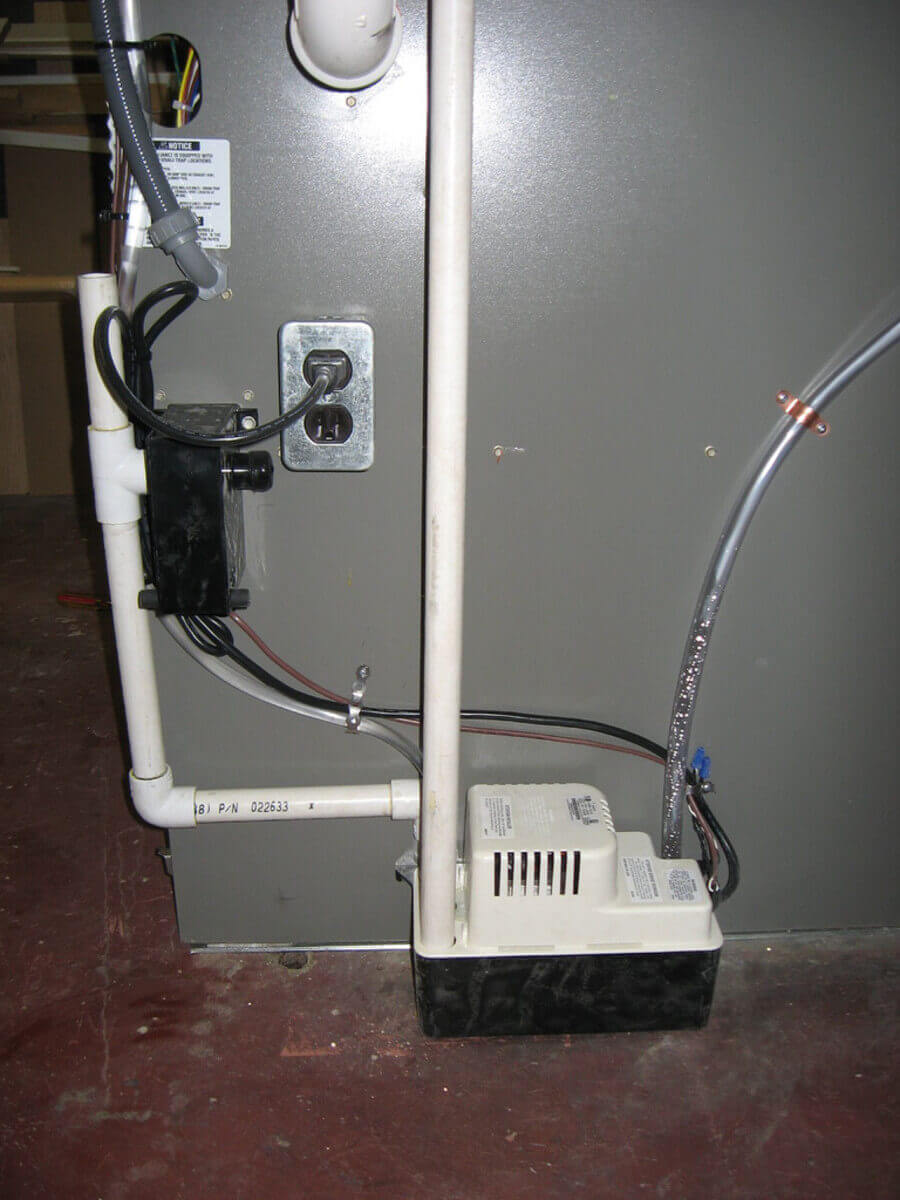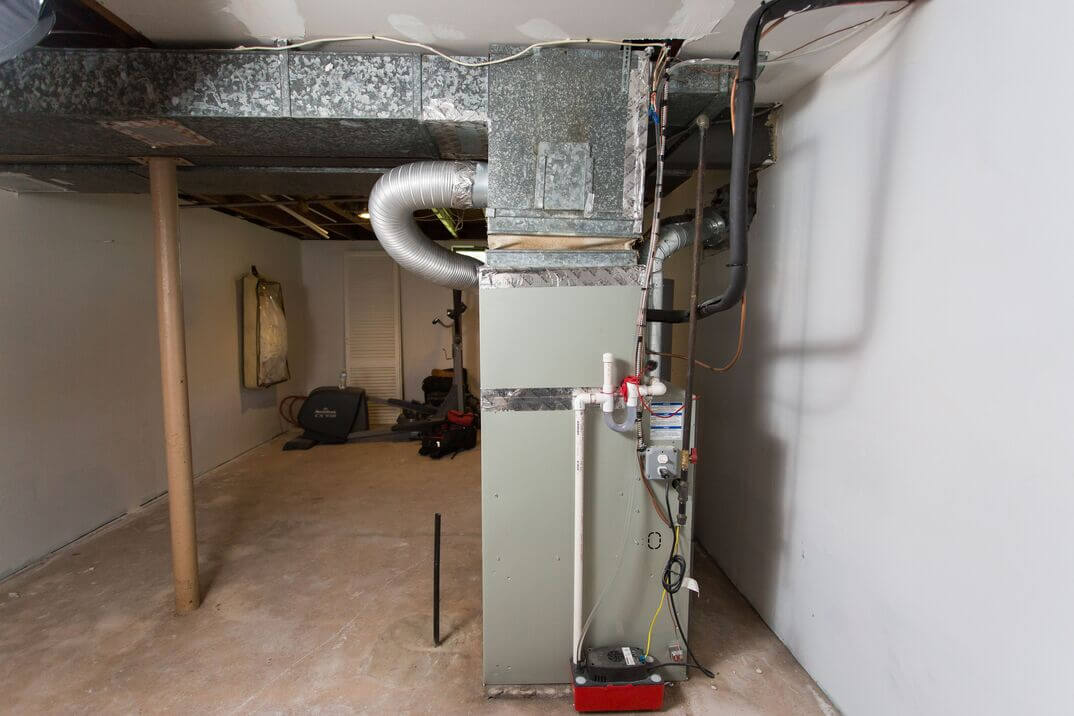Do you have a problem with condensate pump overflowing?
Along our home, a condensate pump helps maintain HVAC systems within our household. The health of this component is key for a fully functional HVAC system and avoidance of any potential flooding.
A condensate pump is a specific type of pump used in households. This pump is used to pump the condensate water which is generally produced by HVAC.
Heating and cooling instruments are the main source of this type of water and pumping their water out is key. Otherwise, the elements filled with that water will fill up and start leaking out of the item.
Why doesn’t the condensate pump work?

The most common cause of stalling from a condensate pump is simply an accumulation of debris. This consistent threat to any pipe system is something that has to be consistently managed to keep it away from ruining our water flow. [1]
Though it’s not the exclusive cause of such issues, accumulated debris is the number one thing to check for. If not, other causes should be considered.
Check the power supply
Our condensate pump will require a constant stream of energy to operate. Which makes lacking power the next most common issue.
If you find yourself with a dysfunctional condensate pump, check its power supply. The power supply could be malfunctioning or straight up not working. Alternatively, it could just be turned off.
It’s easy to accidentally turn the power off for this particular part or the part of the house the condensate pump is in. To resolve this problem, check if the wire is plugged in and turned on. [2]
Check the pump’s float
The condensate pump, like other pumps, has a float inside which helps the pump decide when the water level is too high. The pump’s float can become stuck which will prevent it from fulfilling its role. [3]
This can happen due to debris or algae buildup. Both of these can appear within our pump’s system. These buildups will lock the float in place, so make sure to scrub them off as soon as possible.
The float could also be damaged. You should always check it for cracks or cuts. After all, for a float to function it needs to be whole. Otherwise, inaccurate readings can show up.
The condensate pump overflowing, why is that?

Now, the specific issue of the condensate pump overflowing is its own thing. Many issues can invoke this problem. However, we will end up with some troublesome extra issues if we do not address them. Here’s what can cause it.
- Broken water pump
The water pump keeps the water out of the pan. The pump is constantly at work, pumping water out in order to maintain the amount of water kept at a decent level. That’s why the pan will often have almost no water.
When the pump breaks, the water isn’t pumped out, which means we will end up with far more water in our pump’s pan than there should be. Soon enough, we will see the water build up too much and start overflowing. Heavily flooding as the amount of water that isn’t pumped out increases.
The reasons why our water pump can break are numerous. Sometimes they break from debris falling onto it. Other times, the inside debris and corrosion lead to damage. The last and most frequent source of problems includes simple wear and tear.
- Clogged drain pipe
Our condensate pump works by pushing out the water through a drain pipe. This drain pipe connects to the outside of our house where it deposits the water. A drain pipe can either deposit it into our yard where the water will be absorbed and nullified by the earth or directly be sent to an outlet pipe.
When clogs like these occur, the water cannot flow out of the house through the pump and run back into the house. Constantly amassing until the water starts overflowing. Depending on the size of your pump, the amount of time required for it to start overflowing increases.
Clogs can occur from mold, algae, or constant accumulation of debris. These sources of clogs are a consistent problem we should look out for. Consistent maintenance will keep them from appearing and persisting. [4]
- Excessive flow
A pump has a certain amount of power to expunge the water from this area of the household. However, when that limit is reached, we will have our condensate pump start overflowing. The overflow will then lead to more water overflowing which is generally bad for our home’s health.
Excessive flow of water can easily disturb the whole process of the pump ejecting water from our household. This can happen due to a sudden increase in the water tables, leaks somewhere else in the household, or a sudden rush of water. The pump isn’t made to handle these surges of water, which will overwhelm the pump.
The excessive flow will fill up our pump’s capacity quickly. This way, it will be unable to stop the water from filling up the pan. Which will soon lead to water spreading outside of the pump.
Solutions to condensate pump overflowing
The issues laid above have their solutions. As with any problem that affects our house, we can take some effort and resolve the problem ourselves or, at the very least, diagnose it properly for the professionals to take care of later.
The broken water pump is something that has the most factors that can be causing it so we’ll start from there.
The first step is to inspect the water pump itself. Whether there’s a crack in it or some other malfunction that could be causing the problem.
Next, we should check for corrosion and worn-out parts.
This is guaranteed to give us an upper hand on any encroaching rust that will eventually hamper our pump.
Lastly, run a check on the connected piping. It could be the cause of the problem by either being poorly managed or damaged on its own.
Clogs from pests will often be easiest to detect as the pests themselves will flood into our household. The other sources of clogs can tie back into our general habits when disposing of items. Otherwise, we can locate a clog if the water drains slower or if the water pressure changes harshly.
The issue of excessive flow will be the easiest to spot. As soon as there is a very heavy rain or a similar source of water, the water tables will jump up. Leading to potential overflow of the condensate pump. However, it pays to check if there’s a leak near the pump that generates overflowing water.
Alternative
If none of these fixes and checks work out for you, then it may be time to call a professional. A clog deep in the pipes or a completely broken pump are some considerable issues that may require you to do so.
No matter what, keep in mind that there can also be multiple sources of the problem rather than a single one. Resolving one of them will just lessen the problem and potentially orient you toward the next one.
Read Also: How To Clean Raw Sewage in Basement
Conclusion
The condensate pump overflowing is an issue that is most commonly associated with a direct issue of draining the water. Generally, the best way to avoid these problems is proper maintenance. Though we can also rely on a few other solutions such as checking the power supply or the pump itself for potential malfunction.

Michael Davis is a heating & plumbing expert who currently works as independent contractor in SC. He also writes for Plumbertip.
For almost 10 years he worked on various plumbing tasks across South Carolina.



